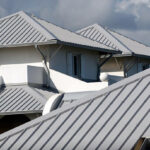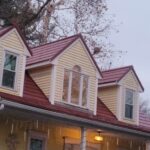Walking On Metal Roofing
ISSUE
Property owners often wonder what is the proper way to walk on their metal roof. They do not want to damage the roof and they are also concerned about obtaining good “traction” for walking on the smooth coatings that are on many metal roofs.
ANALYSIS
One major benefit to metal roofing is its walkability. With many roofing materials, especially after they have aged for a few years, walking on them will cause damage and can lead to roof leaks. Metal roofing, on the other hand, does not become brittle and lose impact resistance with age. Additionally, with most systems, it would be virtually impossible to ever cause leaks by walking on the metal panels.
SOLUTION
The first step to walking on metal roofs is to walk on dry roofs and wear rubber-soled shoes. There are also padded “boots” available for walking on metal roofing. These maximize traction. Additionally, some metal roofs have textured coatings which facilitate walking. Always walk on the portion of the roof panels that is closest to the roof deck. Under most circumstances, the metal will press down solidly against the deck when weight is on it and then spring back into place once the weight is removed. If extensive traffic will take place on the roof, perhaps to do chimney maintenance or the like, plywood sheets or wood planks can be laid down on the roof to distribute weightloads. Such materials can be tied off as necessary for security. Additionally, placing styrofoam, foam rubber, or even old carpeting behind the boards can help prevent scratches to the metal panels. Some formed shake, shingle, and tile facsimile roofs have optional foam backers which can be used to prevent roof damages in high traffic areas.



